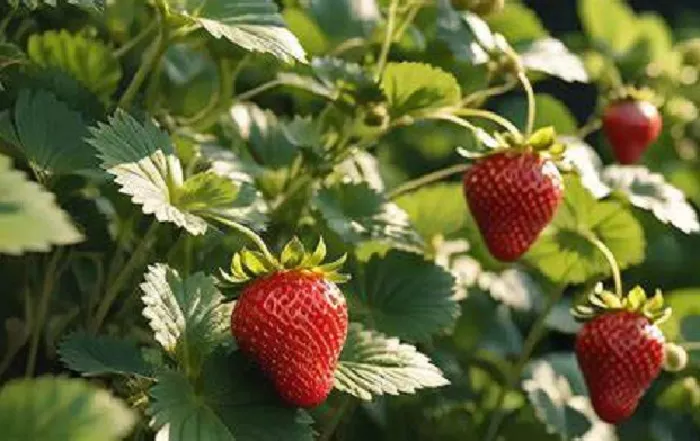Strawberries are a delightful addition to any garden, offering a sweet reward for your efforts. Pollination is a crucial step in ensuring a bountiful harvest. Whether you have a small backyard garden or a large strawberry patch, understanding how to pollinate strawberry flowers can significantly enhance your yield. This guide will walk you through the process, providing practical tips and insights to help you achieve the best results.
Understanding Pollination in Strawberries
Pollination is the process by which pollen is transferred from the male part of a flower to the female part, leading to fertilization and fruit production. For strawberries, this process is essential for the development of those juicy, red fruits we all love. In nature, bees and other insects are the primary pollinators, but in some cases, you may need to lend a helping hand.
The Role of Bees
Bees are nature’s perfect pollinators. They visit flowers to collect nectar and, in the process, transfer pollen from one flower to another. For strawberries, bees are particularly effective because they can access the flowers’ reproductive parts easily. However, in environments where bees are scarce or during adverse weather conditions, manual pollination becomes necessary.
When to Pollinate
Timing is crucial when it comes to pollinating strawberry flowers. The best time to pollinate is during the morning hours when the flowers are fully open and the pollen is most viable. Typically, this is between 8 a.m. and 11 a.m. on sunny days. Avoid pollinating during rain or high winds, as these conditions can damage the flowers and reduce the effectiveness of the process.
Manual Pollination Techniques
Manual pollination is a straightforward process that can be done with a few simple tools. Here are some effective techniques to ensure your strawberry flowers are well-pollinated.
Using a Small Brush
One of the most common methods for manual pollination is using a small, soft brush. A clean, dry paintbrush or a dedicated pollination brush works well. Gently brush the center of each flower, moving from one flower to another. This mimics the action of a bee and helps transfer pollen between flowers.
Vibrating the Flowers
Another effective technique is to gently vibrate the flowers. This can be done by tapping the stem of the flower lightly or using a small electric toothbrush. The vibration helps release the pollen, which then falls onto the flower’s reproductive parts. This method is particularly useful for self-pollinating varieties of strawberries.
Using a Cotton Swab
A cotton swab can also be used for pollination. Dip the cotton end into the pollen of one flower and then transfer it to another. This method requires a bit more precision but can be very effective, especially for small-scale gardens.
Creating a Pollinator-Friendly Environment
While manual pollination is useful, creating an environment that attracts natural pollinators is equally important. Here are some tips to make your garden more inviting to bees and other pollinators.
Planting Companion Plants
Certain plants attract bees and other pollinators. Planting companion plants like lavender, marigolds, and borage near your strawberries can help draw bees to your garden. These plants provide nectar and pollen, making your garden a more attractive stop for pollinators.
Providing a Water Source
Bees need water to survive. Providing a shallow water source, such as a birdbath or a small dish with stones, can help attract bees to your garden. Be sure to change the water regularly to prevent it from becoming stagnant.
Avoiding Pesticides
Pesticides can harm bees and other pollinators. Whenever possible, avoid using chemical pesticides in your garden. Opt for natural pest control methods, such as companion planting and organic sprays, to keep your garden healthy without harming pollinators.
Common Challenges and Solutions
Pollinating strawberry flowers can sometimes present challenges. Understanding these issues and how to address them can help ensure a successful harvest.
Poor Weather Conditions
Adverse weather, such as heavy rain or strong winds, can hinder pollination. In such cases, manual pollination is essential. Be prepared to step in and help when nature can’t do its job.
Pest Infestations
Pests can damage strawberry flowers, reducing the chances of successful pollination. Regularly inspect your plants for signs of pests and address any issues promptly. Using organic pest control methods can help protect your plants without harming pollinators.
Insufficient Pollinators
If you notice a lack of bees in your garden, consider introducing bee houses or planting more pollinator-friendly plants. You can also attract bees by placing a few pieces of ripe fruit near your strawberry plants, which can draw bees to the area.
Conclusion
Pollinating strawberry flowers is a rewarding task that can significantly improve your harvest. Whether you rely on natural pollinators or take matters into your own hands, understanding the process and providing the right environment can lead to a bountiful crop of sweet, juicy strawberries. With a little effort and attention, you can enjoy the fruits of your labor and contribute to a thriving ecosystem in your garden.


